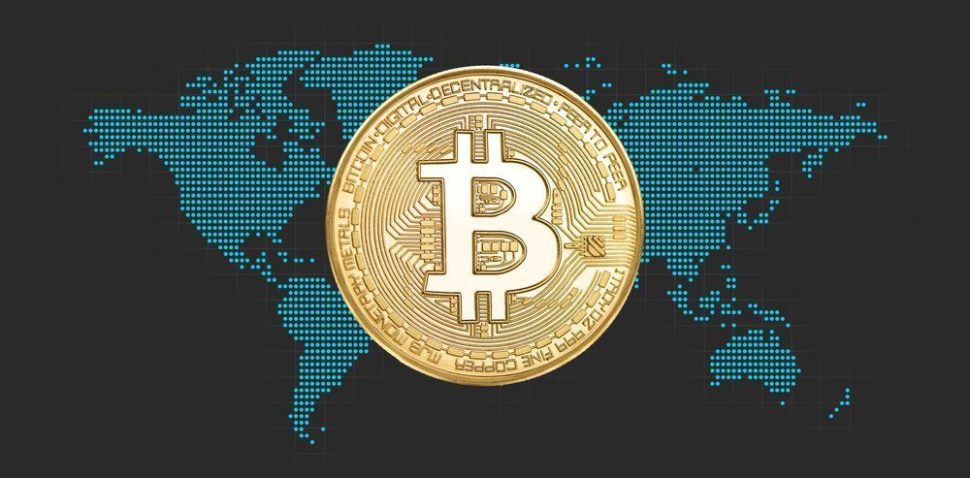While the U.S. is bogged down in fighting inevitable change, Asia is lightyears ahead of other developed nations, as they are building next-gen international partnerships using blockchain.
In late 2016, the Office of the Comptroller of the Currency (OCC), which is an independent bureau under the U.S. Treasury umbrella, decided to take applications from FinTech firms for a special purpose national bank charter.
The SPNB (special purpose national bank) charter would create uniform standards and an oversight regulatory body for FinTech firms that qualified, according to draft guidelines provided by the OCC in March 2017.
The OCC feels it is high time to create a regulatory framework for FinTech banking institutions as the number of FinTech companies in the U.S. has soared. Investment in FinTech companies has increased more than ten times in the last five years, currently around $24 billion USD worldwide.
Worldwide FinTech investment has increased tenfold in the last 5 years.Click To TweetYet, U.S. state banking officials, represented by the Conference of State Banking Supervisors, have sued the OCC, arguing that their plan is in violation of the National Bank Act. To approve SPNB’s, the CSBS argues that the OCC needs congressional approval.
Going further, the CSBS asserts that the OCC would be setting a dangerous precedent where any federal agency could create SPNB charters.
Despite critics of the lawsuit calling the CSBS “Draconian State Banking Legislators,” proponents argue that an OCC FinTech charter would discourage innovation.
Meanwhile, FinTech Investment in Other Parts of the World
According to Nikkei, one of Japan’s most respected financial publications, a number of prominent Japanese banks will test out blockchain platforms as an alternative to Zingen, the country’s current, expensive financial clearing platform.
The Mizuho Financial Group, Resona Bank, and the Bank of Yokohama will all be participating in the test, which they believe will cost them about a tenth of what it costs them to use Zingen.
And Japan seems to be all in.
According to Nikkei again, soon, 10 new cryptocurrency platforms will be in use in Japan. This is all building on top of Japan’s already significant FinTech investment. Both legally and financially, Japan laid the groundwork in the spring of 2016 when they passed bills to recognize cryptocurrencies as the digital equivalent of money.
Other developed nations are already recognizing Blockchain’s potential applications in government, finance, insurance and elsewhere.
Who is Leading the FinTech Investment Charge to Create the Industry 4.0 Global Financial System?
1. Switzerland and Singapore: Collaboration over Competition
Switzerland has a history as an international banking center. Their overarching policy of neutrality has pervaded their past from the Templar Knights during the Crusades to its 20th Century reputation as a tax haven.
Singapore is Asia’s self-proclaimed financial hub and the city-state has pushed hard over last 50 years to realize this goal.
Singapore has FinTech Investment deals with South Korea, the UAE, France, and Japan, and their unique position in Asia makes them an ideal partner for FinTech-friendly countries in other regions.
Last year, All Street Research found that Singapore was one of the top five FinTech hubs in the world.
It’s no wonder Switzerland is looking to join in the fun. According to Channel NewsAsia, Swiss Finance Minister Ueli Maurer said:
“It is important to have good relationships and today is a step to network between the two countries… I think it is important that small countries (which) are important financial [centers] have this network and understand the need to cooperate.
We are not competitors (and) we can cooperate together.”

2. Australia and Indonesia:
In an effort to make intellectual Fintech investment, the Australian Securities and Investments Commission signed an agreement with Indonesia in order to share information of FinTech market trends and regulatory developments.
The hope is that this partnership will increase innovation in both countries.
Australia’s stated goal: to foster economic development in Indonesia.
What role might immigration have in this decision?
The best way to curb massive, overwhelming waves of economic migration is to help stabilize the home country so that there are economic opportunities at home. In other words, reduce the incentive to immigrate.
And unwanted immigration is a concern of Australia’s.
Just look at the Christmas Island boat incident, where tension rose between the two countries after a boat of sixteen supposed refugees was pushed back towards Indonesia without Australia giving notice of their action.
As of 2014, almost 100,000 Indonesian-born migrants were living in Australia, which made up the 19th-biggest migrant population in Australia.
The irregular migration between these two countries is not new, either. Taken from Wikipedia:
“As early as 1750, seamen from the Indonesian island of Makassar had settled on Australia’s northern coast, spending about four months per year there collecting sea cucumbers and taking them back home to trade. By the late 19th century, the pearl hunting industry was recruiting workers from Kupang, while sugar plantations had hired migrant labourers from Java to work in Queensland; Dutch colonial authorities estimated they formed a total population of about 1,000. However, after the federation of Australia and the enactment of the Immigration Restriction Act 1901, the first part of a series of laws which collectively formed the White Australia policy, most of these migrants returned to Indonesia.[2] Beginning in 1942, thousands of Indonesians fled the Japanese occupation of Indonesia and took refuge in Australia. Exact landing statistics were not kept due to the chaotic nature of their migration, but after the war, 3,768 repatriated to Indonesia on Australian government-provided ships.[3] In the 1950s, roughly 10,000 people from the former Dutch colony of the Dutch East Indies (Indonesia), who held Dutch citizenship and previously settled in the Netherlands, migrated to Australia, bypassing the White Australia policy.[4][5] Large numbers of Chinese Indonesians began migrating to Australia in the late 1990s, fleeing the political and economic turmoil in the aftermath of the May 1998 riots and the subsequent fall of Suharto.[6]|”
3. International Baking Transfers and SWIFT
Swift, operator of the global interbanking platform, recently chose Hyperledger Fabric as the core tech for its blockchain proof-of-concept.
Swift’s goal is to see if blockchain can aid reconciliation of nostro accounts in real-time. Nostro accounts make international transactions for the global banking system possible. Simply put, banks put their money into nostro accounts that are closer to a transaction destination so that funds are available to make global transactions more efficient.
The Australia and New Zealand Banking Group (ANZ), BNP Paribas, BNY Mellon, DBS Bank, RBC Royal Bank and Wells Fargo will all be participating in testing the Swift PoC. With potentially hundreds of banks joining in, this could the most influential FinTech investment of 2017.



















Comments (0)
Most Recent